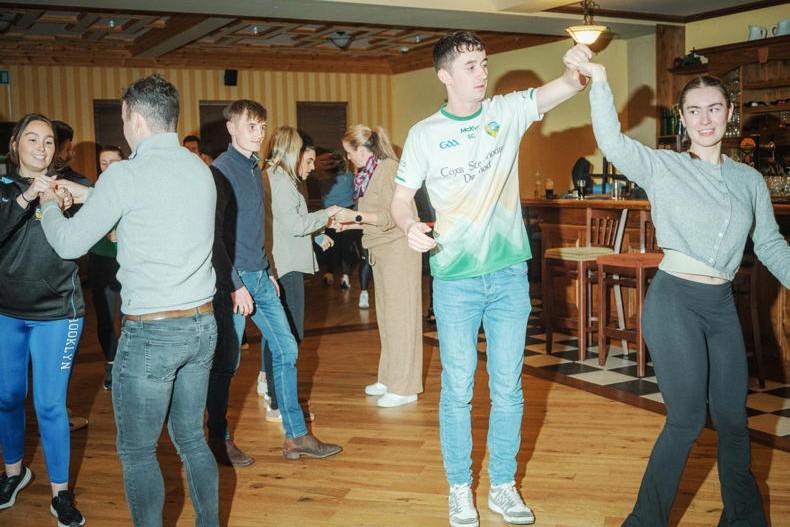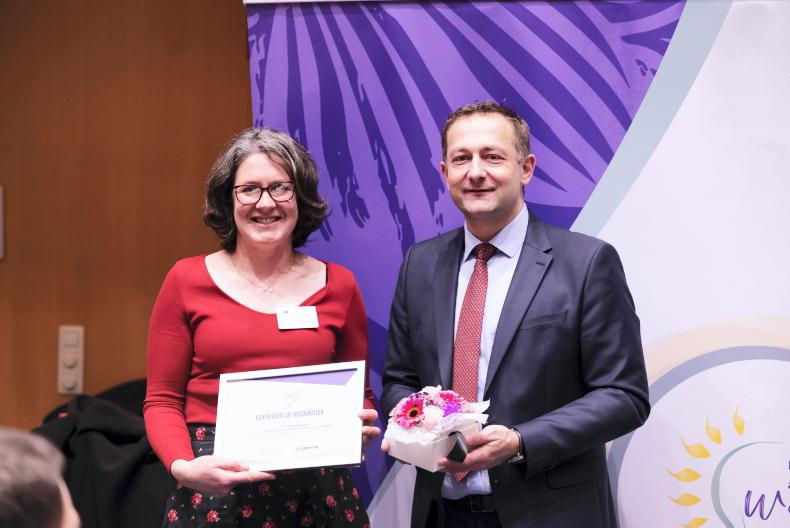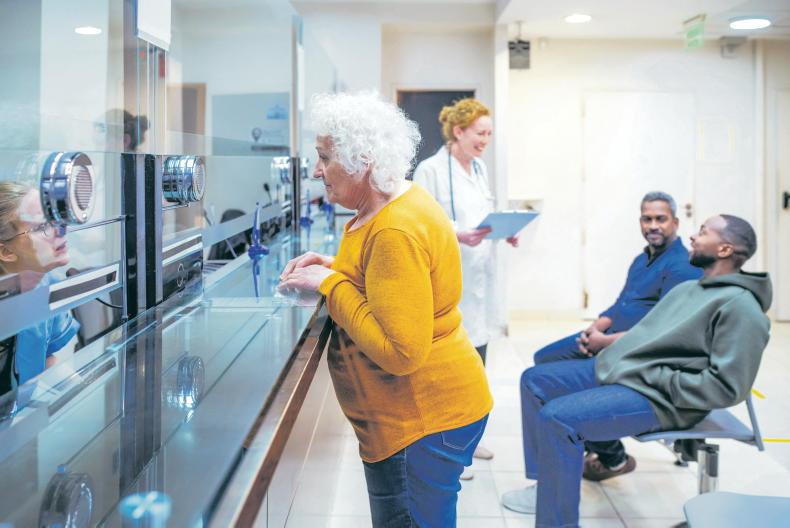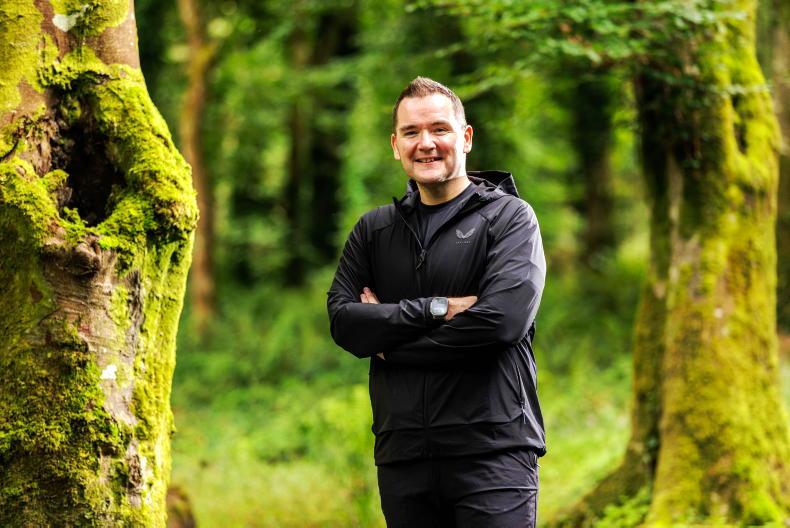Dr Sarah Doyle can recall exactly when she first heard of COVID-19.
It was in January and she was on a teleconference with other specialists in public health medicine around the country.
“Someone on the teleconference mentioned a cluster of unknown respiratory illness in Wuhan. I remember saying, ‘Where was that you said?’ To think now that we had heard nothing about this place before and now we know so much…”
As the days went by, the seriousness of this unknown illness became obvious.
“It very quickly became clear that this was something new and different emerging and very worrying,” she says.
Daily teleconferences soon followed between the Department of Public Health and the Health Protection Surveillance Centre (HPSC) to correlate information coming in from abroad and plan Ireland’s public health response.
She remembers the urgency of the time when, even on Sundays, daily teleconferences began. A running enthusiast, she recalls Sunday 2 February, for example, when she and friends were travelling to Dungarvan to take part in the John Treacy run.
“I was on a teleconference about COVID-19 all the way down in the car,” she says. “It was constant.”
Remarkable national effort
Dr Doyle still feels that she is in the middle of “a remarkable national effort”.
“It has been a privilege to work with so many people from so many walks of life, with the same purpose,” she says.
During the pandemic, she found the nature of her work changing, however. Usually part of the regional public health office team in Kilkenny, she was seconded to lead a COVID-19 public health communications team with the HSE as the crisis worsened, and later became clinical lead with the Contact Management Programme, a position she still holds.
I think we have made a really, really good collaborative effort
Overall, she believes that great leadership has been shown and that compliance by the Irish people has contributed to keeping COVID-19 at bay.
“I think we have made a really, really good collaborative effort and been successful in saving thousands of lives, and our health system didn’t collapse. That was a huge risk,” she says.
“Obviously it’s not over yet and there have been more than 1,700 deaths, a lot of those in nursing homes, and that is a great cause for concern.”
Television appearance
Leading the HSE’s COVID-19 public health communications team in the early stages brought her into the public eye.
“Getting the infection control messages out there was very important,” she says. “As well as radio and TV interviews, much of my work involved writing scripts for the HSE website. That was where people would get their information, so it was really important to get the right public health messages out there.”
Her appearances on the Late Late Show put her in the media spotlight, leading to people she did and didn’t know stopping her on the street to say “well done”.
“In the middle of an intense and exhausting time it [the goodwill] was something that made a big difference to me. Even the railway staff were so good. I was travelling up and down to Dublin each day, maybe one of a handful on the early train, and they really looked after me,” she says.
As February went on, many reports of suspected cases were coming in to the Department of Public Health, but none of them turned out to be confirmed cases, she says.
“The big change, of course, came with the mid-term break and the [school] trips to Northern Italy, where there was a big outbreak,” she says. “Straight after mid-term, we were inundated with phone calls and contact from people who had returned. We were actively and aggressively investigating anyone who phoned us, and giving them advice.”
Confirmation of the first case in Ireland on 29 February meant her communications work intensified.
“It was work from the minute I got up until I went to bed, seven days a week,” she says.
Her first Late Late Show appearance was an opportunity to get the message of handwashing out there.
“I felt that it was an important job to do. I would still say that handwashing is key to the prevention of infection, whether it is COVID-19 or any other. I couldn’t emphasise that enough.”
Breaking the chain of transmission
It’s useful for us all to go back to first principles when thinking about infection control, Dr Doyle says.
“COVID-19 is a disease of overcrowding. You need to go back to how it is spread. It is spread by droplets. I cough or sneeze or sing loudly and if you’re close to me, it may land on you, so that’s direct spread. It may also be indirect, where it’s on the table or on my hands and it goes on the doorknob.
The challenge is to enable us to live reasonable and happy lives that don’t endanger our physical or mental health in other ways, but for us also to minimise the spread of infection
That’s why distance is important, as well as handwashing and cleaning your environment. These actions break the chain of transmission. Not touching your face is also vital, because that’s how the infection gets into the mucosae of your eyes, nose or mouth.”
Dr Doyle is realistic about how people live, however.
“You can prevent the spread of infection by nobody ever seeing anybody again, but nobody would advocate that. The challenge is to enable us to live reasonable and happy lives that don’t endanger our physical or mental health in other ways, but for us also to minimise the spread of infection.
“There is no absolute ‘no risk’. It’s about minimising risk, using a multiple of different factors to minimise the spread of infection.”
A second role
In March, as mentioned, she was seconded to the Contact Management Programme for the COVID-19 pandemic as clinical lead.
This programme was established to provide support to the Departments of Public Health.
“It was in recognition of the fact that the number of cases of COVID-19 was likely to be huge. Thankfully, it didn’t turn out to be as enormous as it could have been, had we not had physical distancing.”
As I said, it’s been a remarkable national effort
This new job meant working in Dublin, however, and with a new team drawn from many health areas across several HSE departments (including the National Women and Infants Programme and Quality Improvement), universities, the Defence Forces, the Revenue Commissioners, Taoiseach’s Office, HIQA, HPRA and some private consultants.
“As I said, it’s been a remarkable national effort.”
While she describes the period since January for her as positive in many ways – the sense of teamwork and national achievement that it has inspired – it was also “very busy, stressful and intense”.
“Obviously everything didn’t go right 100% of the time and we had to deal with or manage incidents like some people getting incorrect results,” she says, “but you have to phone people up, apologise, and say that we are dealing with something on a scale that had never been dealt with before.”
A resurgence?
Going forward is she concerned about a second surge?
“Definitely, but I think everyone is aware of the risk. It’s very different from the first surge, because we know more. We’ve done things and we’ve learned from that. We’re working together and the Contact Management Programme is better aligned with the Departments of Public Health now. A lot of work is being done on that process.”
Dr Doyle, the seventh of nine children, grew up on a farm in Piercestown, Co Wexford.

“I count myself lucky, growing up on a lovely farm and being part of a big family. My father died when I was 15. I was the eldest at home at that stage, and it had a big impact on all of us, but my mother is a very strong woman. In relation to my interest in public health, that may be traced back to her.
She had always been involved in community and voluntary work, whether that was Belfast children visiting Piercestown every summer in a cross-community project, adult literacy involvement, working with the Wexford Rape Crisis centre or the local school or community groups. I think that kind of philosophy filtered down to all of us.
“When I wanted to be a doctor I wanted to make a difference. Maybe that’s why I was drawn to public health in particular. When the opportunity arose to be a spokesperson I thought, ‘This is really important’, that I know about this stuff, as it’s my job. I nearly felt a moral responsibility to communicate the messages people need, to try to make a difference.”
Had she ever thought, when training, that she would have to help deal with a pandemic?
“A pandemic is always on the cards because of how closely we live with animals,” she says. “That’s the most likely place that a pandemic is going to emerge from, from the animal population into the human population as a new virus like this one did.”
In relation to illnesses that transfer from animal to human, Dr Doyle has been involved with the South East Regional Zoonoses Committee for many years and a research paper that she co-authored related to farmers’ infection prevention practices (the first study of its kind) has now been included in the Leaving Certificate Agricultural Science text book.
With every week during a pandemic feeling like a long time, she believes that it is too early yet to assess her overall experience.
“It will probably be next year or the year after before I or anyone can really reflect on or digest all that has happened,” she says.
Dr Sarah Doyle can recall exactly when she first heard of COVID-19.
It was in January and she was on a teleconference with other specialists in public health medicine around the country.
“Someone on the teleconference mentioned a cluster of unknown respiratory illness in Wuhan. I remember saying, ‘Where was that you said?’ To think now that we had heard nothing about this place before and now we know so much…”
As the days went by, the seriousness of this unknown illness became obvious.
“It very quickly became clear that this was something new and different emerging and very worrying,” she says.
Daily teleconferences soon followed between the Department of Public Health and the Health Protection Surveillance Centre (HPSC) to correlate information coming in from abroad and plan Ireland’s public health response.
She remembers the urgency of the time when, even on Sundays, daily teleconferences began. A running enthusiast, she recalls Sunday 2 February, for example, when she and friends were travelling to Dungarvan to take part in the John Treacy run.
“I was on a teleconference about COVID-19 all the way down in the car,” she says. “It was constant.”
Remarkable national effort
Dr Doyle still feels that she is in the middle of “a remarkable national effort”.
“It has been a privilege to work with so many people from so many walks of life, with the same purpose,” she says.
During the pandemic, she found the nature of her work changing, however. Usually part of the regional public health office team in Kilkenny, she was seconded to lead a COVID-19 public health communications team with the HSE as the crisis worsened, and later became clinical lead with the Contact Management Programme, a position she still holds.
I think we have made a really, really good collaborative effort
Overall, she believes that great leadership has been shown and that compliance by the Irish people has contributed to keeping COVID-19 at bay.
“I think we have made a really, really good collaborative effort and been successful in saving thousands of lives, and our health system didn’t collapse. That was a huge risk,” she says.
“Obviously it’s not over yet and there have been more than 1,700 deaths, a lot of those in nursing homes, and that is a great cause for concern.”
Television appearance
Leading the HSE’s COVID-19 public health communications team in the early stages brought her into the public eye.
“Getting the infection control messages out there was very important,” she says. “As well as radio and TV interviews, much of my work involved writing scripts for the HSE website. That was where people would get their information, so it was really important to get the right public health messages out there.”
Her appearances on the Late Late Show put her in the media spotlight, leading to people she did and didn’t know stopping her on the street to say “well done”.
“In the middle of an intense and exhausting time it [the goodwill] was something that made a big difference to me. Even the railway staff were so good. I was travelling up and down to Dublin each day, maybe one of a handful on the early train, and they really looked after me,” she says.
As February went on, many reports of suspected cases were coming in to the Department of Public Health, but none of them turned out to be confirmed cases, she says.
“The big change, of course, came with the mid-term break and the [school] trips to Northern Italy, where there was a big outbreak,” she says. “Straight after mid-term, we were inundated with phone calls and contact from people who had returned. We were actively and aggressively investigating anyone who phoned us, and giving them advice.”
Confirmation of the first case in Ireland on 29 February meant her communications work intensified.
“It was work from the minute I got up until I went to bed, seven days a week,” she says.
Her first Late Late Show appearance was an opportunity to get the message of handwashing out there.
“I felt that it was an important job to do. I would still say that handwashing is key to the prevention of infection, whether it is COVID-19 or any other. I couldn’t emphasise that enough.”
Breaking the chain of transmission
It’s useful for us all to go back to first principles when thinking about infection control, Dr Doyle says.
“COVID-19 is a disease of overcrowding. You need to go back to how it is spread. It is spread by droplets. I cough or sneeze or sing loudly and if you’re close to me, it may land on you, so that’s direct spread. It may also be indirect, where it’s on the table or on my hands and it goes on the doorknob.
The challenge is to enable us to live reasonable and happy lives that don’t endanger our physical or mental health in other ways, but for us also to minimise the spread of infection
That’s why distance is important, as well as handwashing and cleaning your environment. These actions break the chain of transmission. Not touching your face is also vital, because that’s how the infection gets into the mucosae of your eyes, nose or mouth.”
Dr Doyle is realistic about how people live, however.
“You can prevent the spread of infection by nobody ever seeing anybody again, but nobody would advocate that. The challenge is to enable us to live reasonable and happy lives that don’t endanger our physical or mental health in other ways, but for us also to minimise the spread of infection.
“There is no absolute ‘no risk’. It’s about minimising risk, using a multiple of different factors to minimise the spread of infection.”
A second role
In March, as mentioned, she was seconded to the Contact Management Programme for the COVID-19 pandemic as clinical lead.
This programme was established to provide support to the Departments of Public Health.
“It was in recognition of the fact that the number of cases of COVID-19 was likely to be huge. Thankfully, it didn’t turn out to be as enormous as it could have been, had we not had physical distancing.”
As I said, it’s been a remarkable national effort
This new job meant working in Dublin, however, and with a new team drawn from many health areas across several HSE departments (including the National Women and Infants Programme and Quality Improvement), universities, the Defence Forces, the Revenue Commissioners, Taoiseach’s Office, HIQA, HPRA and some private consultants.
“As I said, it’s been a remarkable national effort.”
While she describes the period since January for her as positive in many ways – the sense of teamwork and national achievement that it has inspired – it was also “very busy, stressful and intense”.
“Obviously everything didn’t go right 100% of the time and we had to deal with or manage incidents like some people getting incorrect results,” she says, “but you have to phone people up, apologise, and say that we are dealing with something on a scale that had never been dealt with before.”
A resurgence?
Going forward is she concerned about a second surge?
“Definitely, but I think everyone is aware of the risk. It’s very different from the first surge, because we know more. We’ve done things and we’ve learned from that. We’re working together and the Contact Management Programme is better aligned with the Departments of Public Health now. A lot of work is being done on that process.”
Dr Doyle, the seventh of nine children, grew up on a farm in Piercestown, Co Wexford.

“I count myself lucky, growing up on a lovely farm and being part of a big family. My father died when I was 15. I was the eldest at home at that stage, and it had a big impact on all of us, but my mother is a very strong woman. In relation to my interest in public health, that may be traced back to her.
She had always been involved in community and voluntary work, whether that was Belfast children visiting Piercestown every summer in a cross-community project, adult literacy involvement, working with the Wexford Rape Crisis centre or the local school or community groups. I think that kind of philosophy filtered down to all of us.
“When I wanted to be a doctor I wanted to make a difference. Maybe that’s why I was drawn to public health in particular. When the opportunity arose to be a spokesperson I thought, ‘This is really important’, that I know about this stuff, as it’s my job. I nearly felt a moral responsibility to communicate the messages people need, to try to make a difference.”
Had she ever thought, when training, that she would have to help deal with a pandemic?
“A pandemic is always on the cards because of how closely we live with animals,” she says. “That’s the most likely place that a pandemic is going to emerge from, from the animal population into the human population as a new virus like this one did.”
In relation to illnesses that transfer from animal to human, Dr Doyle has been involved with the South East Regional Zoonoses Committee for many years and a research paper that she co-authored related to farmers’ infection prevention practices (the first study of its kind) has now been included in the Leaving Certificate Agricultural Science text book.
With every week during a pandemic feeling like a long time, she believes that it is too early yet to assess her overall experience.
“It will probably be next year or the year after before I or anyone can really reflect on or digest all that has happened,” she says.










SHARING OPTIONS